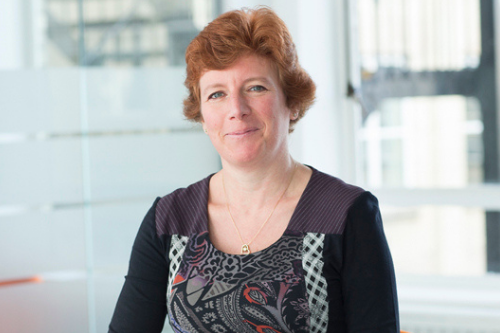

The global COVID-19 crisis has highlighted how critical risk management is for virtually all organizations, especially at this delicate stage of recovery amid the threat of the virus’ resurgence caused by the Delta variant.
According to Claire Combes (pictured above), chairperson of UK-based risk management association Airmic, the pandemic has shown the importance of understanding and managing risks, as well as taking any opportunities that arise.
“Risk management has never been so high up the corporate agenda,” Combes said in an interview with Corporate Risk and Insurance. “Organizations that had considered risks and contingency planning, even if not for the pandemic risk, were able to react more quickly and hence limit downside and take opportunities. However, there were, and still are, a large number of organizations that don’t have those skills.”
Airmic, Combes said, has a role to play in imparting critical risk management skills to various organizations.
“An early observation was that a number of organizations did have pandemics on their risk register, but they did not spend any time on this, as the perceived likelihood of the risk was so low,” Combes said. “It is important to remember that risk management is not purely a mathematical exercise. At a previous organization, we used to have an annual discussion on all of the high-impact risks, regardless of their likelihood. The key controls were resilience and business continuity controls to manage the risk once it has happened, which can still be planned for, despite the likelihood.”
According to Combes, all risks are subject to variables that even experts are unable to predict or understand. However, even if an organization cannot put in controls to prevent a risk, it can still manage the right-hand side of the risk bowtie model by looking at how to manage consequences of a risk, regardless of how they occurred.
When COVID-19 vaccination programs went full swing worldwide earlier this year, many were optimistic. However, the emergence of the virus’ more infectious Delta variant placed a damper on the enthusiasm, with many jurisdictions reimposing restrictions to travel and public gatherings.
Combes believes that the risk management community must remain vigilant in the face of the new threat, which could spell a major setback in global recovery efforts if left uncontrolled.
“As risk managers, we have to ensure that we don’t think that a risk has gone away, purely because it has been managed to a certain level,” Combes said. “The fact that there are variants of concern means that we need to keep reviewing what we have in place and plan for alternative outcomes.”
Since the pandemic broke out worldwide, the risk management community shifted to virtual meetings and other non-contact ways of doing business. Almost all events are now conducted online, but Airmic is looking to hold a physical event while keeping attendees safe – a practical exercise in risk management.
“As a risk community, we have managed to share ideas and do business in a remote fashion, when we can’t meet face to face,” Combes said. “I do recognize, however, that both the risk and insurance professions are very knowledge and relationship-driven. Many people cannot wait to have physical interactions again. I’m delighted that we are able to hold our two-day conference on Oct. 5 and 6 in Brighton. A lot of work has gone into structuring a conference that can be held safely, and into documenting the milestones that needed to be met in order for Airmic to be confident that we should, and could, run a successful conference. I’m delighted that the conference is going ahead; sharing and recognizing the great work done by both partners and members during the pandemic and the latest risk and insurance thinking and insight. It will be great to have the formal presentations and workshops, but also the informal interactions that make the professions so rewarding.”
